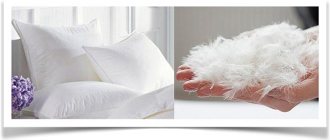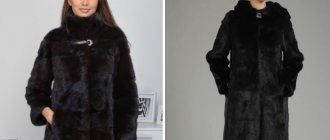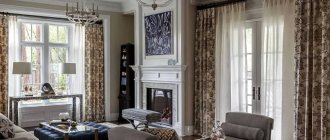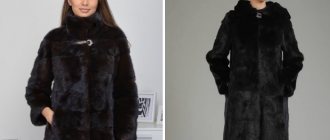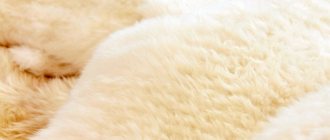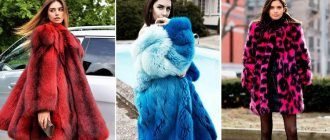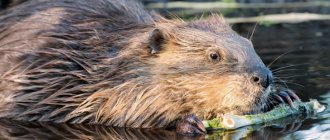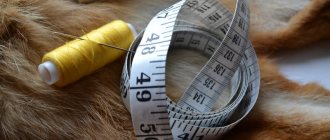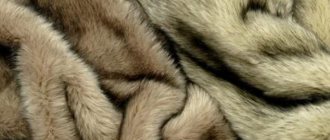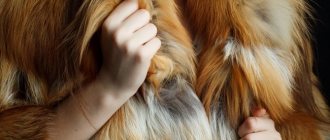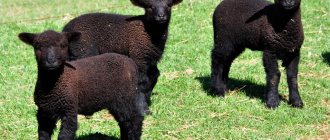Purchasing a mink coat is a significant event in life. You don’t often afford such a purchase; it’s worth preparing for it not only financially. There are many types of mink fur used for making fur coats. It is useful to understand the features of products, the influence of the structure and origin of fur on its characteristics and cost.
Professional advice on how to choose a mink coat
You need to approach the choice of a mink coat thoroughly:
- Carefully examine the product in good lighting. It should shine, the color must be even.
- Run your hand over the surface. It should flow, the fibers should be elastic and not shaggy. When stroked against the grain, it quickly returns to its previous shape. There should be no lint left on the palm.
- If you choose a painted variation, you need to wipe it with a wet cloth, on which no traces of paint should remain.
- Inspect the shoulder seams and sleeve seams especially carefully. It is in these places that “baldness” is noticeable.
- Check the fur coat by ear. It shouldn't rustle like paper. This is a sign of poor skin processing.
- Estimate a fur coat by weight. It should not be too light; during dressing, the skin could be stretched.
- The lining of the product is made of high quality fabric.
Choice of collars
Color nuances
When choosing a mink coat, you need to decide on your color preferences. There are two main standard fur colors: dark brown and black. But thanks to the hard work of breeders, many new and varied undertones and shades have appeared, allowing you to choose a product to suit your taste. It can be either silver-blue, steel, platinum, beige, light brown, or completely white and even marble color. There may be light or dark inclusions and spots at the ends of the hairs.
And although there are extremely many options for mink colors today, it is worth considering that fur can often be subject to additional dyeing at the factory. Both darkening and lightening of the hairline are used. In the latter case, the mink acquires a golden, copper or bronze color, which it does not have in nature.
↑ Return to contents
Mink fur: types
One of the varieties is Scandinavian. It was brought to Europe from North America at the beginning of the 20th century. The climate of the Scandinavian countries and the efforts of Danish and Finnish specialists have made it possible to develop many varieties with amazing names and smooth, shiny fur color:
- mahogany - rich brown color;
- pastel - brown color with a grayish tint;
- black - with a slight brownish-coffee tint.
You might be interested in this Characteristics and features of satin fabric: products made from the material
Big variety
Scandinavian mink
The Scandinavian variety is waterproof and wear-resistant. The coat is smooth and of medium length. Danish fur is delicate, with a short awn and thick down. Finnish is more rigid, the spine is longer, and there are fewer undercuts. Scandinavian mink coats not only look expensive, but are also very warm.
Russian mink
The main difference is the length of the coat. The spine is higher than the down and stands out noticeably against its background. In this case, the density of the wool is weakly stuffed, similar to a marmot and very dense. The high down and long pile of a Russian mink fur coat will provide excellent warmth in the harshest winters. The Russian one looks a little shaggy, but it has a silky texture and a shiny appearance.
For your information! The natural colors of Russian mink do not require painting.
Russian fur coat
Chinese mink
China is actively increasing its fur production. But it is called Chinese quite arbitrarily, because minks of all main types are raised there: North American, Scandinavian, Russian. The quality of the Chinese product is low: long, hard spine, sparse down. The reason is that farms are located in different climatic zones and there are not enough qualified specialists. The skins are dyed, sheared and plucked. The advantages of the Chinese version are its relatively cheap price.
European mink
The hair of European mink is short and thick, most often black, with a brownish tint.
European mittens
Interesting classification features
The commodity classification of mink fur is different:
- products from animals raised in the wild are divided into 3 varieties;
- by the number of defects - for furs with minimal, medium and large flaws;
- the furs of free animals are distinguished by habitat;
- raw materials from caged minks are classified into 2 grades;
- All mink furs are divided by color and size.
First grade furs are called full-haired. They have a shiny coat with dense spinous hairs and down. The inside (underside) is clean, homogeneous. A slight blue tint may be visible along the edges of the fur at a distance not exceeding 3 cm.
Specimens of the second grade have less full-haired fur. It shines. The awns and down are not fully developed. The tail may not be too furry. The blueness on the flesh is larger than in first-class furs.
Third grade mink fur is obtained only from free animals. They have smooth, shiny, thick semi-hairy fur with a blue underside. The hairiness of the tail leaves much to be desired.
The differences in defect evaluation are interesting. Thus, if in a caged mink small fur defects include breaks that reach 15% of the total area, then for fur of this category obtained from free animals, the size of the gap can reach 25%.
Important! Skins from spring animals with thinning hairs, thinning awns, and yellowish flesh are valued at no more than 25% of the cost of first-class fur with large sizes. Skins of animals that lived in the wild, obtained in the off-season, should not be used for work at all.
Spectacular images
Mink products are always relevant. With a collar or hood, a long fur coat or a short sheepskin coat is luxurious and status-worthy. The wardrobes of fashionistas are replenished with jackets and vests with a stand-up collar, a shawl or no collar at all. Magnificence inspires the creativity of couturiers to create absolutely incredible images.
Interesting! Products made from knitted mink never go out of fashion. The skins are cut into ribbons and tied to a knitted base. Knitting makes fur lighter, the price is cheaper, but it is no less effective.
Against the backdrop of mink splendor, it is easy to distinguish the carefully selected skins of the North American Black Llama mink. Black fur turns into dark chestnut and gray, matte like velvet. The awn is short, reaching the level of the thick down. Luxurious products made from it can only be worn by a select few.
What to wear with a seal coat this winter?
Only thanks to the natural, unique pattern, seal fur coats already look original. A variety of styles and models will not leave you indifferent; everyone will be able to choose the right model for themselves.
Stylish fur coat with turn-down collar
Most often, fur coat models have a straight or A-shaped cut, long sleeves and a thick collar add grace to a fur coat. It is possible to combine seal fur with other furs. As an option, trim the collar and sleeves of a blue-black seal fur coat with raccoon fur.
Modern fashion designers skillfully combine such fur coats with suede and leather. Seal coats are combined with transverse and longitudinal leather inserts, and the fur product is also complemented with a leather belt at the waist.
You can also diversify your cat fur coat with shiny accessories and metal fittings.
As for choosing clothes and creating an image with a seal coat, there are practically no restrictions. For example, a seal sheepskin coat can be complemented with warm high gloves and a clutch, which will match the color of boots or ankle boots.
Seal fur jacket
Chunky leather bags and leather boots go perfectly with longer models of seal coats. A black fur coat can be highlighted by wearing white golf socks and straight-fit white trousers; you can complement the look with heeled boots.
A seal fur coat can even be combined with knitted accessories; a knitted hat and scarf will make the look soft and warm.
How to distinguish sheared mink from other furs
Note! You can often find fur that looks like mink. What is it called - rabbit. Outwardly, it is very similar to a sheared mink, the difference is small. But the rabbit is much softer to the touch, its fur is sparse and does not shine.
You might be interested in what Angora wool is: what animal is it made from, characteristics of the material
The fur of a marmot and a mink have differences - its spine is characterized by different lengths, is less plastic, and when stroked “against the grain” it bristles and prickles.
The difference between a marmot and a mink
The Honorik has a darker coat color than the undercoat, unlike the mink, which has the same color.
Sheared lamb fur is becoming increasingly popular. It is light and warm, but not shiny.
Cut, color and styles
It is also necessary to pay attention to the technology of joining the skins, the color of the fur and the length of the coats. This affects the cost, the overall fashionable image of a woman and the period of wearing the product. When choosing a fur coat, you should not only choose those fur salons where mink coats are better, but also choose the right style to suit your figure. Mink outerwear should fit beautifully on the figure, emphasizing its advantages and hiding flaws. Fur coats of different lengths and different silhouettes are made from mink. No other fur has such versatility. This is why fur designers and fashion designers love him.
Crossbars
Fashionable fur coats in which the skins create a striped effect. The skins are stitched horizontally, which is why this effect is created. Such fur coats are cheaper than those where the fur plate is sewn horizontally with the pile down.
pros:
- warm;
- beautiful;
- lungs;
- affordable.
The downside is that such models are only suitable for slender girls.
Blue mink
A beautiful mink with gray shades. It looks very beautiful and has all the advantages of a high-quality mink coat. Elite models are made from such skins of rare color.
Pros:
- gorgeous view;
- soft and light;
- not painted;
- holds heat very well.
The downside is the high price and special care that is needed to preserve its unique color.
Black mink
One of the most expensive mink coats, available in two versions: Scandinavian (Scanblack) and North American (blackglama) mink. Very beautiful and durable. It has a short pile and a deep solid color. Only expensive coats are made from it. One of the best mink coats. The advantage of such fur is softness, durability, beauty and the ability to protect from any cold weather. The only disadvantage of such a fur coat is the high cost.
Light mink coat
This is the rarest and most expensive natural mink fur. Animals with such fur are specially bred. There are no such animals in the wild. The advantage of such a fur coat is a luxurious look that adorns a woman. There are no shades on the skins; the product has a uniform light shade. It can also be considered a minus , since it can turn yellow from improper storage. In addition, such fur coats are very expensive, and their wear life is shorter than that of dark models. Such fur products are not suitable for women with a full figure.
Brown mink
The most common type of natural mink, which is very popular. There are various shades of brown unpainted mink - from light beige to dark brown. There are brown mink coats that imitate sable. The most popular shade is “mahogany”.
pros:
- long lasting natural color;
- large selection of shades;
- different prices;
- long-lasting wear and fairly easy care;
- versatility.
downsides to this mink coat.
Fake mink (faux fur)
In the production of faux fur, synthetic fibers with the addition of viscose are used. Modern industry, with the help of innovative technologies, produces high-quality products that are not much different from natural fur: smooth fur, thick down, magnificent color, shine, elasticity.
Artificial fur
Having a decent appearance, faux fur has a number of advantages:
- costs less;
- lasts longer;
- easy to care for;
- not afraid of pests.
Note! One of the disadvantages is that a faux fur mink coat is less warm than a natural one, but this is compensated for by tailoring.
Mink coats
When choosing faux fur products, it is important to consider that its quality varies. You have to look at it and touch it. High-quality fur has uniform, dense fur that is firmly attached to the base, does not become shaggy, does not smell of paint, and when wet, the paint does not get dirty.
Casual clothing or a decorative item made of fur is always stylish and dignified. Clothes made from natural fur or faux fur should be purchased only in specialized stores, then the item will delight you for many seasons.
How not to make a mistake with the size?
- If the fur product is chosen correctly, it does not hinder movement. When you raise your arms up, no folds are formed, there is no feeling that there is any pinching or pulling . In the normal position of the arms, the sleeve should cover the wrist by 4-5 centimeters.
- You should pay attention to how the fur coat looks on the chest. should be no excess volume here (an allowance of no more than 6 cm is possible). It is worth paying attention to buttons or hooks. They should not be pulled tight when the fur coat is buttoned up - this is outerwear, so it should not be tight.
- Protruding pockets are not only unsightly. This fact indicates that this model is small and a larger size is required.
- The reason to try on another option is the waistline , which is not located where it should be. Perhaps the fur coat is short (if the waist goes under the chest) or, conversely, too long (when this line goes down to the hips).
